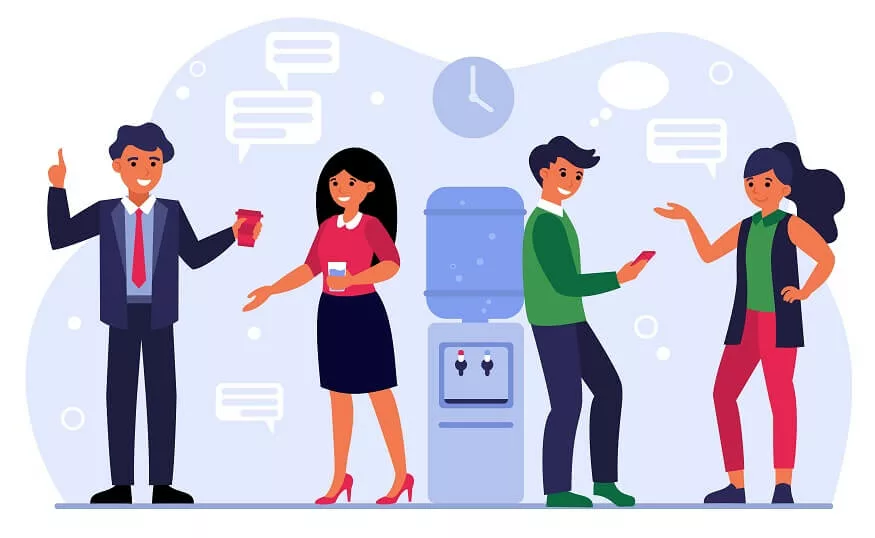Communication is the foundation for all human relationships. We use communication as a tool to share everything with our near and dear ones and with strangers too. It is used to be able to resolve conflicts by better understanding situations; it is used to collaborate and build long-lasting and trusting relationships. It is a process by which information is exchanged between individuals with the help of symbols, signs, and behaviour.
5 Types of communication:
- Verbal Communication: It occurs when people engage in speaking with each other.
- Nonverbal Communication: Is what people do to say more than the actual words.
- Written Communication: It is a more formal but less efficient form of communication, which is exchanged through a written message between two or more people.
- Listening: It is the ability to receive and interpret messages accurately.
- Visual Communication: It is the practice of using our visual elements to get a message across.
Also read: What Are Pangrams? Benefits For Kids
One may want to know how many types of nonverbal communication are there. Well, in the world of nonverbal communication, there are a total of eight categories which include space, time, physical characteristics, body movements, touch, paralanguage, artefacts, and environment. Since there are several nonverbal communication types mentioned below, here are some aspects and examples of nonverbal communication:
10 Best Examples of Nonverbal Communication:
- Facial Expressions: Without a doubt, it is the most common type of nonverbal means of communication. A facial expression is more than one motion or position of the facial muscles. According to these movements, people convey their emotional state to an individual observer. And hence, facial expressions are considered a form of nonverbal communication.
- Gestures: It is basically the movements of the body which are used to express or emphasise an idea or a feeling. A gesture is considered a form of nonverbal communication or a non-vocal communication because of its body actions that are visible and are used to convey a message, instead of speech. Gestures also include the movement of the hands and the face.
- Paralinguistic: It is the loudness or the tone of the voice we use. It is defined not by what you say but the way it is said. It is a form of communication which means other than words, which is usually used alongside language.
- Body language and Body Movements: It is the nonverbal communication that is often done instinctively rather than consciously, and it is used for physical behaviour, expressions, and mannerisms.
- Posture: It is the position or the bearing of the body, whether assumed or characteristic, used for a specific purpose. In humans, posture has significant importance that gives information through nonverbal communication. There are several studies and research that have demonstrated the effects of body posture that can convey emotions.
- Eye Contact: Similar to touch, eye contact is made to communicate nonverbally. It could be a conscious or subconscious way to engage in communication through mutual eye contact. Eye contact occurs when two or more people look at each other in the eyes at the same time. In humans, eye contact is considered a form of nonverbal communication as it can have a large influence on social behaviour.
- Proxemics or personal space: It is the effect of the spatial separation which is naturally maintained between individuals.
- Physiological Changes: It is the characteristic of being healthy or functioning normally of the body.
- Appearance: Someone’s outward aspect or external show or an outward indication. It is basically what we want to be seen as or show.
- Artefacts: It is mostly related to objects and images. It is the showing of workmanship or modification as distinguished from a natural object. It is especially related to an object that is from a particular period that has value and contains prehistoric artefacts.
Also read: Why Multilingualism is Crucial for Early Childhood Development
The human voice specifically produces frequencies and serves as a primary sound source through the vocal cords. It consists of sounds created by using vocal tracts in a human, including talking, humming, singing, laughing, crying, and screaming.
So one may ask what the importance of nonverbal communication is and what does nonverbal communication mean. Well, nonverbal communication has a significant role in the lives of us all. It improves a person’s ability to relate to any situation and engage in any conversation. It helps to establish meaningful interactions in our everyday life. Communication helps individuals gain a better understanding of this type of communication, enabling them to develop stronger relationships with others and benefit socially.
Verbal communication is using speech or words that are spoken to exchange information, emotions, and thoughts. Nonverbal communication, on the other hand, is conveying and exchanging messages without the use of spoken words. That is basically what verbal and nonverbal communication is in a nutshell for you.
Nonverbal communication is the sending of cues to others that use actions rather than words. People are able to express happiness, concern, gratitude, and confidence by responding nonverbally. This includes communication using hand gestures, eye contact, body language, appearance, facial expressions, and the tone of voice.
5 Principles of Nonverbal Communication:
- Nonverbal communication is continuous.
- Multichannel, conscious and intentional.
- Multichannel, unconscious and unintentional.
- Ambiguous.
- Can occur both face-to-face and through mediated platforms.
Now that we know so much more, one may ask what the features of nonverbal communication are. Well, one must look for nonverbal communication cues, the way we listen, look, move, and react to the things and people around us. It tells the person that you are communicating, it shows if you are being truthful, and how well you are listening. When a person’s nonverbal signals match the words they use, it definitely increases trust, clarity, and rapport with others.
The main element of nonverbal communication is body language, and it is the most obvious form of nonverbal communication. It has the ability to convey a lot about the level of interest. For example, folded arms indicate that one may not be open to what is being said. When a person conveys their thoughts, feelings, and mood through visual rather than verbal cues, these visual signals also include facial expressions, eye contact, and subtle as well as not-so-subtle gestures. A person must have the said nonverbal skills to communicate easily.
The best style of communication is by being assertive. It is said to be the most effective form of communication among humans. The assertive style features open communication while not being overbearing. It can express its own needs, desires, ideas, and feelings while also considering the needs of others.
Nonverbal communication helps us to express ourselves better even before a word is said. The receiver, on the opposite side, observes the body gestures and facial expressions of the speaker, with the sole purpose of trying to make sense of all these symbolic messages. The most important area of nonverbal communication is facial expressions, which serve as a channel for nonverbal communication and are helpful for displaying emotion or mood.
Also read: 7 Important Life Lessons Kids Should Learn
At EuroSchool, we ensure every child knows what nonverbal communication is and take into consideration all of the examples of nonverbal communication and understand the meaning of nonverbal communication. It is necessary for us to teach our children about nonverbal communication so that they can function with respect and dignity in society.










